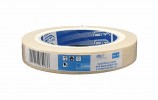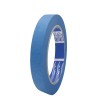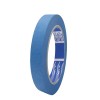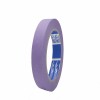Masking tape: what are its uses and how to choose it
What is the purpose of masking tape? And how can you choose the best one according to the use you intend to make of it? Well, as you may know, there are many different types of adhesive tape: there is paper tape, cloth tape, insulating tapes, high-thickness tape, and so on.
Masking tape is a specific type, too, and it must be noted that it was the first type of adhesive tape to be invented. The very first adhesive tape was created by Richard Drew, a researcher at 3M who, in 1925, developed an adhesive masking tape to facilitate the work of those involved in industrial painting.
It is therefore not surprising that, during almost a century of history, masking tape has developed in different directions, presenting different options to those who intend to buy it.
What is masking tape? What are its purposes?
Masking tape has a specific purpose. Let’s consider normal adhesive tape: it is a tool with the purpose of “attaching” something.
American duct tape is known for its great resistance, making it ideal for makeshift repairs in different contexts. Masking tape, on the other hand, is not distinguished by its grip power or resistance.
Masking tape needs, in fact, to adhere to surfaces just enough to allow the painted to spread out the colour. The most well-known and widespread masking tape is the one made with paper, which nowadays is used by people when painting their house to make precise lines, and to avoid leaving smudges and getting anything dirty.
It is, therefore, clear that masking tape doesn’t so much have the purpose of “sticking” as much as it has of “masking” certain surfaces, to protect them during paint applications. Let’s have a look at how various masking adhesives differ, according to the sectors and uses.
How to choose masking tape
Now, let’s have a look at how to choose masking tape. As mentioned above, there are many different types of masking tape, with very different characteristics.
However, there are obviously common points: it is a one-sided tape in all cases, and it usually has easily removable glue, which makes it possible to remove the tape easily, without damaging the underlying surface and leaving no residue.
One might therefore assume that any kind of masking tape might be suitable for all uses. But this is not the case: the surfaces on which it can be applied changes, as well as the temperatures which it can be subjected to, the paints which it must withstand, the application time, and so on.
Because of this, on our online sale of professional adhesive tape e-commerce website, you will be able to choose your own masking tape between 4 different categories, dedicated respectively to:
1. Masking adhesive tapes for use up to 60 °C (140 °F): adhesive tape designed for construction, painting, and bodywork, which can be exposed to temperatures up to 60 °C (140 °F); this is the most common and popular tape.
2. Masking adhesive tape for use up to 80 °C (176 °F): For many industrial applications, one might need to rely on masking tape resistant to slightly higher temperatures.
3. Masking adhesive tape for use up to 100 °C (212 °F): in specific industrial applications, temperatures might be higher than 100 °C (2012 °F), and it is therefore necessary to be able to rely on masking tape that can also guarantee grip and removability at such temperatures.
4. Masking adhesive tapes for outdoor use: finally, there is masking tape designed for outdoor use. It is, therefore, water and ultraviolet resistant adhesive.
To choose the right masking tape it is, then, necessary to consider the type of environment and context in which it will be used, as well as the surfaces and paints with which it will come into contact.
After that, one needs to also keep in mind the width of the adhesive tape, which can be large at minimum, depending on the different applications. Finally, it is good to estimate the meters of masking tape which will be needed to complete the work, to avoid needing to order the same product several times over a short period.
How to use masking tape
Having outlined how to choose masking tape, let’s quickly review how to use this tool correctly. Its application is simple; you will need to clean the surface on which it will be attached, to ensure maximum grip.
You can then apply the tape, carefully, without creating any folds, following the established line, to avoid compromising the final result. You can then proceed with the painting process – wall, furniture, bodywork and so on.
Before the colour dries completely you can proceed with the removal of the tape, to be carried out without violent tears, in a regular manner, maintaining a 45 degrees angle (the optimal inclination to not spoil the colour).







